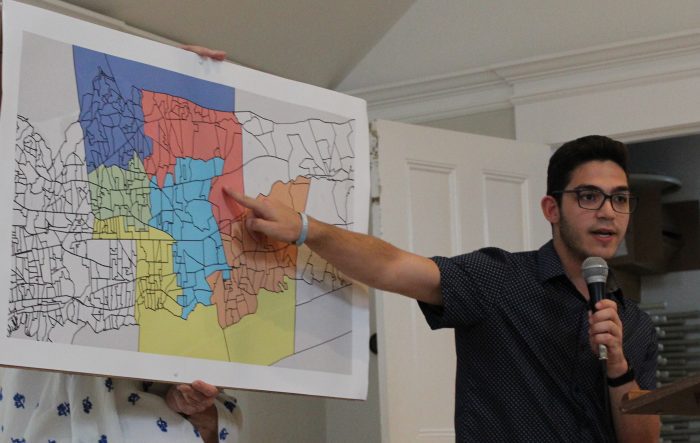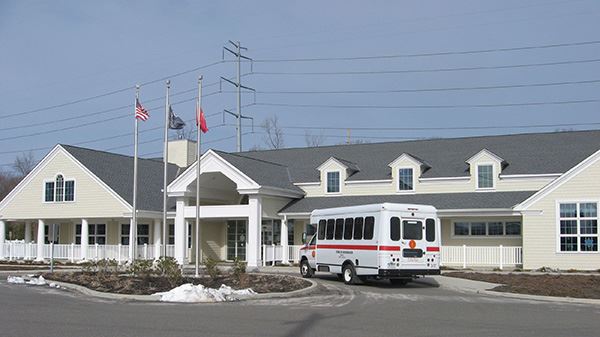From gavel to gavel, it looked like any other public meeting of the Brookhaven Redistricting Committee.
But this was no meeting at all, at least not officially. Without a stenographer, an advising counsel or quorum, the three members present were left alone in a hot and humid room to hear public comments on redistricting.
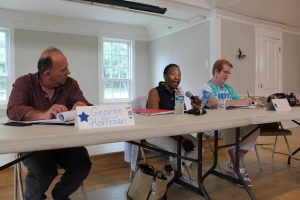
On Friday, Aug. 5, five of the eight members of the Brookhaven Redistricting Committee failed to make an appearance at a public meeting scheduled for 6 p.m. at the Setauket Neighborhood House, standing up the three Democratic appointees to the committee and dozens of Brookhaven residents. For a committee that is, by design, supposed to be nonpartisan and independent, this marks yet another setback in a redistricting process which has become an all-out circus.
Meeting cancellation
George Hoffman, a Setauket resident and member of the redistricting committee, explained the last-minute cancellation of Friday’s meeting. He said originally the committee suspected it would have enough members to hold the meeting.
In the final hours leading up to the meeting, Hoffman said the quorum quickly dissolved as more committee members announced they could not attend. By mid-afternoon, the committee’s counsel, Vincent Messina, informed the remaining members that the meeting was canceled.
“This afternoon at 2 or 3 o’clock, we were told that Vinny Messina canceled the meeting without even discussing it with the chairpeople,” Hoffman said. “They decided to cancel this meeting without any concern for the people that were already coming. They only pulled it from their website at 4:30.”
Hoffman, who has clashed publicly with the committee’s counsel, has criticized the way in which the redistricting process has unfolded. Despite a looming Sept. 15 deadline, Hoffman said the committee members have had little to no input throughout this process.
“The committee has been completely divorced from the mapmaking process,” he said. “Other than just sitting here at the public meetings that we’ve had, we’ve never met with the mapmaker, we’ve never explained what we would like to see in the maps.” Referring to the two maps that have circulated on the committee’s website, he added, “Those maps came out of nowhere. We never accepted them as a committee, even for discussion purposes. They’re just a fiction.”
Between the mysteriously created maps and the cancellation of public meetings, Hoffman has expressed growing frustration with the outside counsel. “We’ve tried to pull together this commission, but they keep insisting that those maps that they created somehow have validity, which we say they don’t.”
Messina could not be reached for comment.
‘The most egregious and unnecessary thing that I see in these proposed maps is dividing Port Jefferson Station.’
—Steve Englebright
Public commentsNew York State Assemblyman Steve Englebright (D-Setauket) reflected on the days when there were at-large elections for the Brookhaven Town Council. With at-large elections, the residents did not feel connected to their representatives.
The change to councilmanic elections did not change the balance of power in Brookhaven, according to Englebright, but it strengthened the connection between representatives and constituents.
“It was not something that favored the Democratic Party — what it favored was the democratic principle,” Englebright said. “It favored direct representation, it made Brookhaven grow up, if you will, within the context of the promise and premise of a direct representation form of government.”
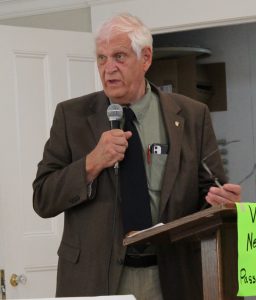
Englebright addressed the precarious future of Port Jefferson Station/Terryville, which is split under the two draft proposals on the committee’s website. He supported keeping that community of interest unified under one council district.
“Port Jefferson Station, under the mysterious map, would be divided — the library would be in one part, the high school would be in somebody else’s district,” the assemblyman said. “We worked hard for communities to have … direct representation, so the most egregious and unnecessary thing that I see in these proposed maps is dividing Port Jefferson Station.”
Logan Mazer, a resident of Coram, responded to the two map proposals on the committee’s website. “When I saw the two maps that were put out, I was disgusted and horrified that they would attempt to make such a dramatic change from the current maps that we have now,” he said.
Mazer proposed a map of his own. “Today, we have a viable option with my map, the map of least change,” he said. “While I will be the first to admit that the map has its flaws and is not perfect, I wholeheartedly believe that it is the best option to create fair and equitable [districts] for all of Brookhaven Town.”
Ira Castell, a member of the Port Jefferson Station/Terryville Civic Association, supported Mazer’s proposal, arguing that it best comports with the town code and keeps communities of interest together.
“That meets the letter of the law and the intent of the law,” he said. “It keeps the capacity for this community of interest — ours here in the 1st District — to stay together.” He added, “It’s not the ‘Port Jeff Station/Half of Terryville Civic Association.’ We are all united.”
Castell defined the term “community of interest.” A community of interest, he said, “is for people who have a common policy concern and would benefit from being maintained in a single district. Another way of understanding a community of interest is that it is simply a way for a community to tell its own story.”
Under this definition, PJS/Terryville constitutes a community of interest, according to Castell. For this reason alone, it should be unified within the town council, he indicated.
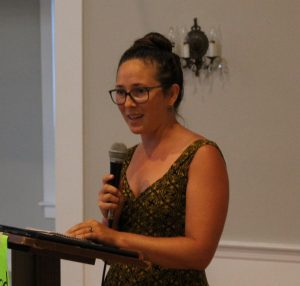
Port Jefferson Village trustee Rebecca Kassay also made an appearance at this unofficial meeting. Speaking as a private citizen, she stood in solidarity with her neighbors in Port Jefferson Station/Terryville.
“I have had tremendous success … working alongside the civic association, the chamber of commerce and these other groups in Port Jefferson Station/Terryville, who have made phenomenal progress,” Kassay said. “As their neighbor, I know that our success in revitalizing the uptown of Port Jefferson village hinges on the success of Port Jefferson Station/Terryville.” She added, “I do not want to see that community split up because there is so much strength there.”
Following adjournment, members of the public agreed to bring their grievances to Brookhaven Town Hall during a meeting of the Town Board on Thursday, Aug. 11, at 5 p.m.
—Photos by Raymond Janis

